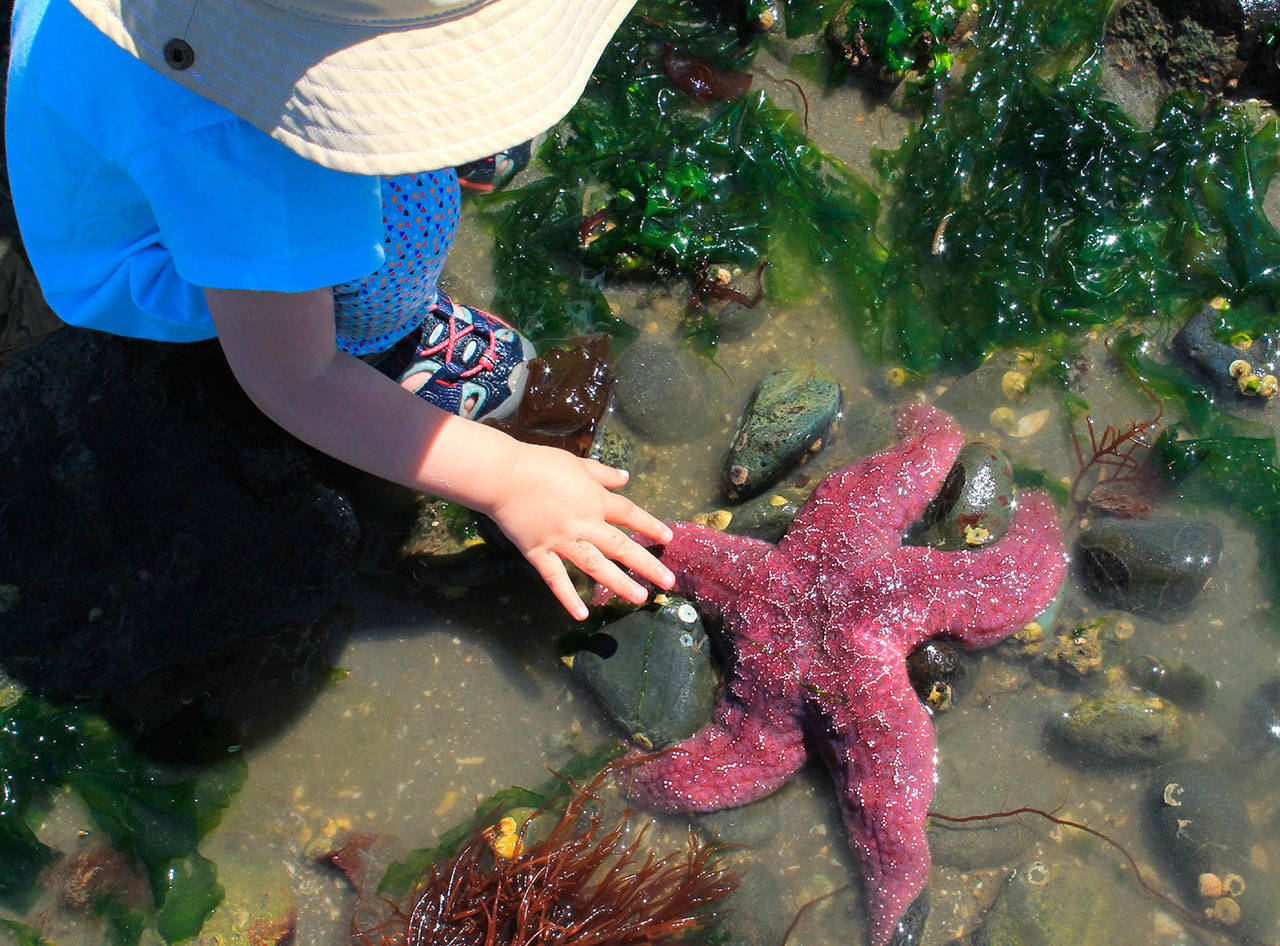I’m bent over double, shoulders in knots, knees creaking in protest when I stand.
This is heaven.
During our lowest tides, Puget Sound waters creep away from shore, exposing a wide swath of sand and mud. From May through July, fantastical marine creatures, created in a moment of whimsey, are temporarily exposed for curious humans.
Down the shore, shrill voices stab the air: “Hey mom! Come ’ere and see this neat thingamajig with all the legs! Wow! This purple creepy crawly is eating a green whatsits!” Time, experience, and handy field guides have taught me much. I can now identify the purple creepy-crawlies and the green whatsits they’re munching on.
Of course, not all Northwest shorelines are alike. Thousands of years ago, Puget Sound was covered by a massive ice sheet rising 2,000 feet higher than Seattle’s Columbia Tower.
As the frozen blanket crunched its way south, it ground the rocky layers below into fine particles. Thus, most Kitsap shores are composed of sand and mud.
Yet there’s plenty to see and learn from along our shores, where tides are wedded to the rhythm of the moon circling our planet. For exposed sea life, this is a tough neighborhood. Accustomed to total submersion, many marine animals come armed with clever defenses like custom shell shapes, rubber necks, and impregnable armor. The magic is in the details.
At Point White, I kneel by a shallow depression that still holds saltwater. I watch tiny legs emerge from a discarded snail shell as a hermit crab lurches seaward, dragging its borrowed home like an RV. It’s headed for a large bed of eelgrass awash at the low water line, long green blades flattened forlornly on the sand. Deeper into the Sound, these beds are always submerged, blades standing several feet high, forming a marine “forest” that provides shelter, food, and a nursery for fish, crabs, snails, urchins, scallops, anemones, and more.
On the exposed shore, I find sea stars in psychedelic colors: orange, red, blue or purple, slumped in the shallows awaiting the incoming tide.
The ochre sea star, Jesse Owens of the intertidal zone, puts its hundreds of tiny tube feet to work as it glides over wet sand toward the water.
At island beaches like Point White, glistening seaweeds wash ashore, displaying elegant shapes in rainbow colors. These serve as moist shelters for crabs, marine snails, and flower-like sea anemones awaiting the tide’s return.
No matter where we tread, our local waters delight in uncovering a hint here, a clue there, brief visions of an exotic world that lies deeper. For air breathers like me, curfew is near.
As the waters rise, intertidal residents gratefully resume their normal lifestyles, while I, the uninvited, retreat to higher ground.
* Intertidal rules of etiquette: When observing marine creatures: Do not disturb, do not touch!
Nancy Sefton is a writer, photographer and artist who is active in the Great Peninsula Conservancy.



